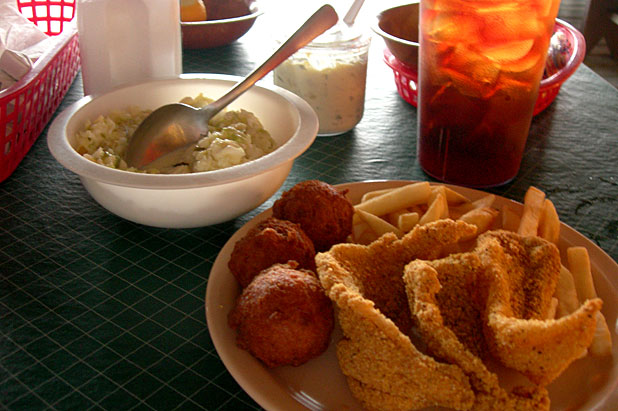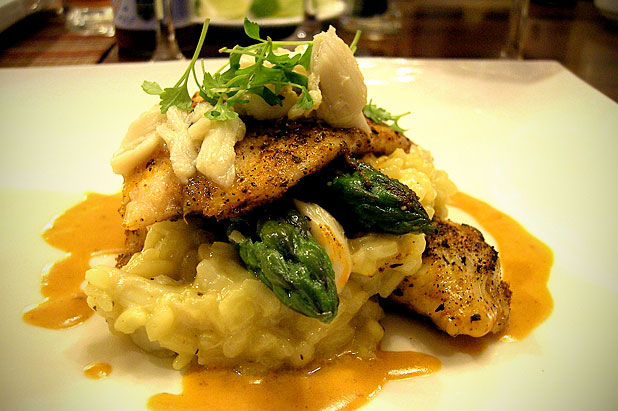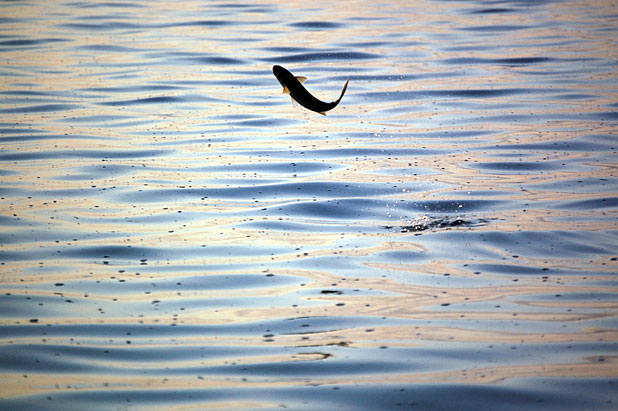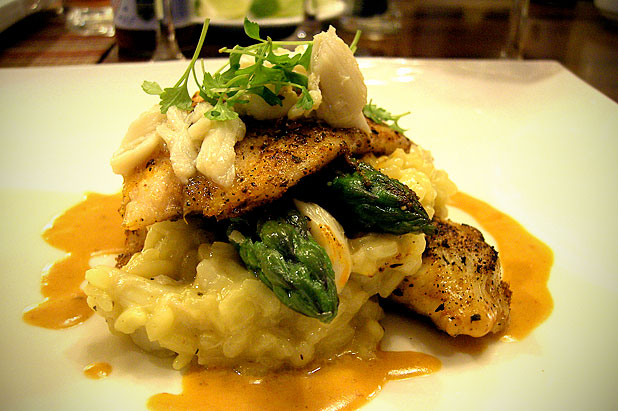Seafood menus are a minefield if you’re trying to eat conscientiously. Those tiger shrimp in your cocktail? So tasty — but shrimp farms are destroying Asia’s mangrove forests, along with the other creatures and people who depend on these delicate ecosystems. Is your sushi shrinkwrapped? Then you can be pretty sure it’s not sustainable.
But with the BP well still hemorrhaging petroleum into the Gulf of Mexico, now’s your chance to eat some seafood guilt free. As Gary Nabhan writes today for Grist, 138 place-based foods are directly affected by the Gulf oil spill, as are the mostly ethnic-minority fishers and foragers who depend on those foods for their livelihoods. But perceptions to the contrary, not all Gulf fisheries are closed. Plenty of shrimp, shellfish, and other seafood that have been greenlighted by the Monterey Bay Aquarium’s Seafood Watch program are still making it to market. The problem is that consumers are afraid to buy them. Well, fear not. Safeguards are in place — including federal oil-sniffers!
So as Slow Food New Orleans activist Poppy Tooker tells Nabhan, take this opportunity to “Eat it to save it!” As long as you can find Gulf seafood at a market or restaurant near you, you can be sure it’s safe. And by buying it, you’re supporting fisherpeople in dire straits.
This slideshow highlights some of the tastier items to look for:
 (Photo courtesy Blissful_Bee via Flickr)
(Photo courtesy Blissful_Bee via Flickr)
Fried oyster po-boys, like this one at the New Orleans po-boy institution Mother’s, are ubiquitous along the Gulf Coast, and one of the safest ways to eat oysters during months without an “R” in them. (The frying kills any warm-season pathogens that might be present in the oysters.) Of course, frying can’t decontaminate an oil-tainted bivalve, but many Gulf Coast oyster farms remain unaffected by the BP leak.
 (Grouper photo courtesy cwilso/Flickr; dish photo FL Dept. of Ag)
(Grouper photo courtesy cwilso/Flickr; dish photo FL Dept. of Ag)
The stately Goliath grouper, found ofF the coasts of Florida, Cuba, and Mexico, is one of several groupers threatened by the spill. Grouper is a staple at Florida’s seafood restaurants, the featured fish for humble burritos to fancy filets.
 (Photo courtesy nola.agent via Flickr)
(Photo courtesy nola.agent via Flickr)
According to Seafood Watch: “U.S. shrimp trawlers must adhere to stricter environmental standards than those in other countries and this makes U.S. wild-caught shrimp a Good Alternative [while] imported shrimp is on the Avoid list.” Small shrimp boats like this one in Crown Point, La., which catch the majority of the white, brown, pink, and rock shrimp in the Gulf, have been the most crippled by the spill, as it came right at the beginning of the season.
 (Photo courtesy jimmywayne via Flickr)
(Photo courtesy jimmywayne via Flickr)
The southeastern U.S. supplies most of the farmed catfish in this country, one of the few aquaculture operations dubbed a Best Choice by Seafood Watch for its ecological responsibility. While chances are the catfish in Alabama restaurants like Ezell’s Fish Camp in Lavaca (pictured) are farmed, the wild Gafftopsail and hardhead varieties are directly threatened by the spill.
 (Photo courtesy rdpeyton via Flickr)
(Photo courtesy rdpeyton via Flickr)
Walk into any New Orleans restaurant worth its Tabasco and you’ll find blackened redfish on the menu, charred with a coating of pepper and paprika.
 (Photo courtesy Greyhoundmom via Flickr)
(Photo courtesy Greyhoundmom via Flickr)
Grist readers probably think of mullet as a bad haircut, since this humble fish doesn’t travel much outside the Gulf Coast — except as bait. But each year about 8 million pounds of mullet are harvested off the coastline of Florida alone. Leaping mullet are a frequent sight at dawn and dusk and the firm, full-flavored fish is a favorite in Southern cooking. The mountain, striped, and white mullet — all Seafood Watch Best Choices — are at risk from the spill.


